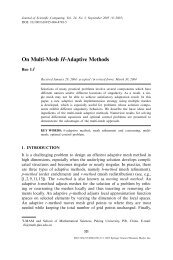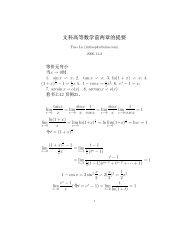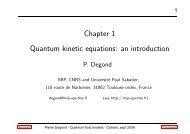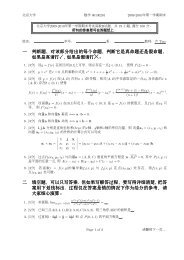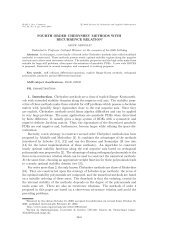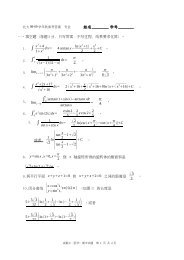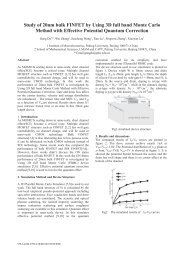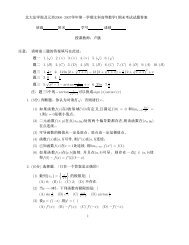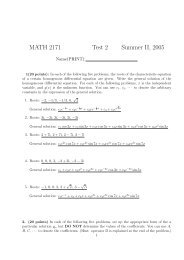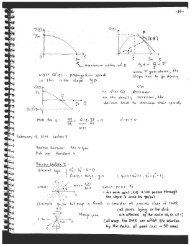Abstract
Abstract
Abstract
You also want an ePaper? Increase the reach of your titles
YUMPU automatically turns print PDFs into web optimized ePapers that Google loves.
CHAPTER 1. OVERVIEW 22<br />
get<br />
<br />
<br />
K(f) <br />
(xm,kj)<br />
⎧<br />
⎪⎨ −<br />
≈<br />
⎪⎩<br />
hkj<br />
2m∗ (−3 fmj +4 fm−1,j − fm−2,j<br />
), if kj > 0<br />
2∆x<br />
− hkj<br />
2m∗ (3 fmj − 4 fm+1,j + fm+2,j<br />
), if kj < 0<br />
2∆x<br />
(1.18)<br />
We use a differencing scheme that depends on the sign of kj to respect the physics of<br />
the problem and thereby keep this approximation from being unstable. If kj > 0, this<br />
corresponds to electrons with positive momentum, moving from the left side of the<br />
RTD to the right side of the RTD. This means information is propogating from the<br />
left when kj > 0, and therefore to compute an approximation to the spatial derivative,<br />
we want to use functions values that are to the left of the current point. Similarly,<br />
when kj < 0, information is propogating from the right side of the RTD to the left<br />
side of the RTD, and we use function values that are to the right of the current point<br />
where we are computing an approximation to the spatial derivative.<br />
The P (f) term is discretized with the composite trapezoidal rule, which is second-<br />
order accurate. So we have the approximation:<br />
<br />
<br />
P (f) <br />
(xm,kj)<br />
≈− 4<br />
Nk <br />
fmj<br />
h<br />
′T (xm,kj − kj ′)wj ′ (1.19)<br />
where wj ′ are the weights of the composite trapezoidal rule, given by:<br />
wj ′ =<br />
⎧<br />
j ′ =1<br />
⎪⎨ ∆k, for j ′ =2, 3,...,Nk − 1<br />
⎪⎩<br />
∆k<br />
2 , for j′ =1,Nk




